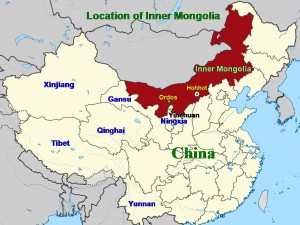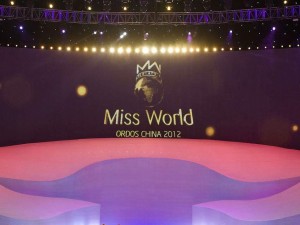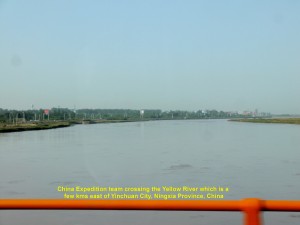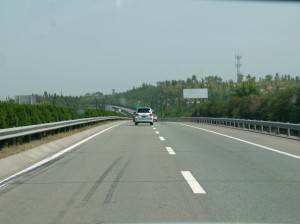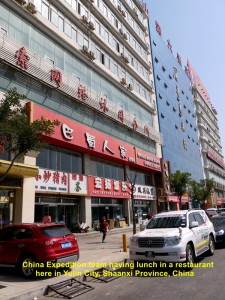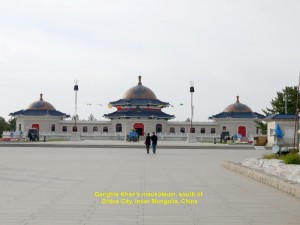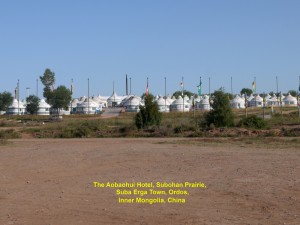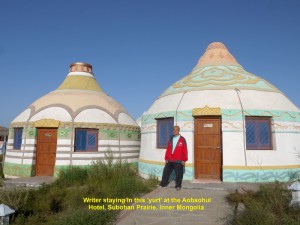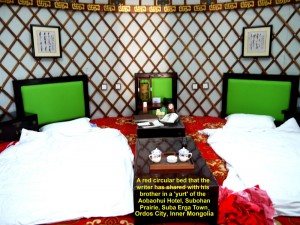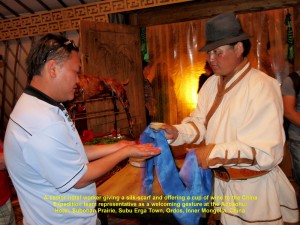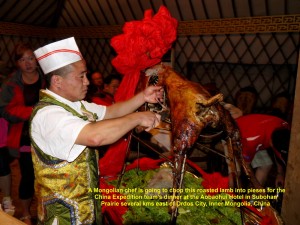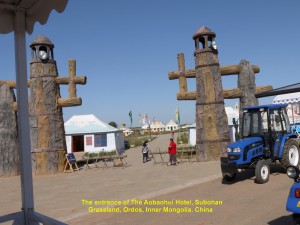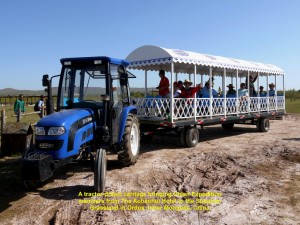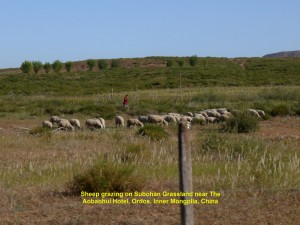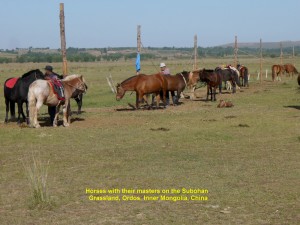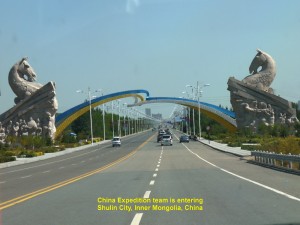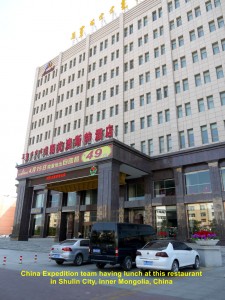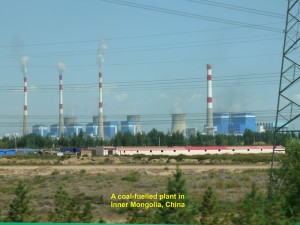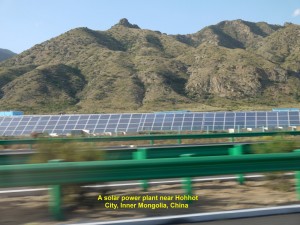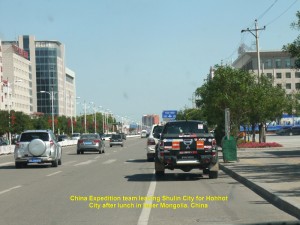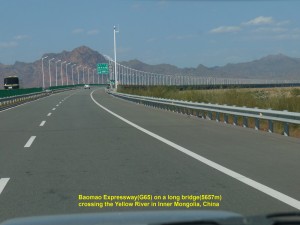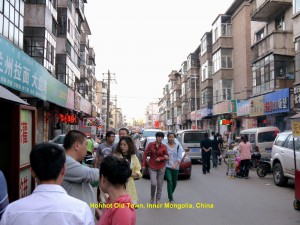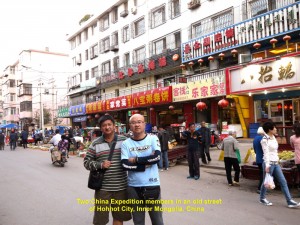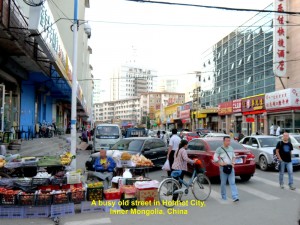Journal of my 2013 China Expedition Part VIII (Inner Mongolia)
Journal of My 2013 China Expedition Part VIII (Inner Mongolia)
Inner Mongolia Journey
Day 30 (Friday, 13.9.2013)
Yinchuan – Ordos
(Distance: 458 km)
At 8.20 a.m., we left Yinchuan City in Ningxia Province for Ordos City which is 458 km away in Inner Mongolia. Ordos City became well-known all over the world when it held the Miss World Pageant in 2012, and Miss China PR, Yu Wenxia, won the crown after beating 115 contestants.
While travelling east from the city we crossed the Yellow River. Later, we passed through farmlands, grasslands and lowlands where tall trees were growing.
After five hours of travelling on a good expressway, G65 Baomao Expressway. we reached Yulin City at the northern border of Shaanxi Province where we stopped at a restaurant for lunch. After lunch we headed north for Ordos City. At 4 p.m. we reached the Genghis Khan’s Mausoleum Tourist District located near Ejin Horo Qi Town and several kms south of Ordos City.
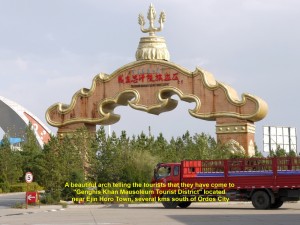
An arch over a road to the Genghis Khan’s Mausoleum Tourist District, near Ejin Horo Town, Ordos, Inner Mongolia, China
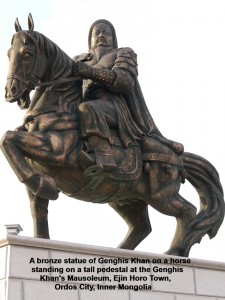
A bronze statue of Genghis Khan on a horse on a high pedestal at Genghis Khan’s Mausoleum, Ejin Horo Town, Ordos City, Inner Mongolia
Genghis Khan(1162-1227) ruled Mongol Empire or Yuan Dynasty(1271-1368) that covered China and a large part of Central Asia from 1206 until he passed away in 1227. Nobody knows the cause of his death nor the location of his tomb in Mongolia. His successors extended his empire to the west as far as eastern Europe, south Russia and the Middle-East.
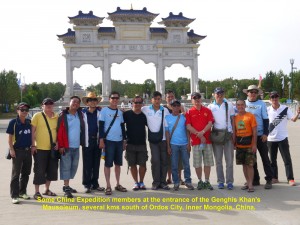
China Expedition members visiting Genghis Khan’s Mausoleum, near Ejin Horo Town, Ordos City, Inner Mongolia, China
In this tourist area there is a unique building which looks like a grand palace painted in white, blue and orange. It consists of three octagonal halls in a shape of a typical Mongolian home known as yurt. They are connected to each other by covered corridors. Along these corridors are frescos depicting the life of Genghis Khan and the great achievements of his grandson, Kublai Khan.
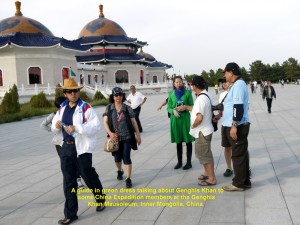
A guide in green dress talking about Genghis Khan to some China Expedition members at the Mausoleum, Ejin Horo Town, Ordos City
Construction of this grand building started in 1954 and completed in 1956 with the purpose of making it a place for Genghis Khan’s mausoleum. The Mongolians consider it a temple where they worship Genghis Khan as their god. They gather at this mausoleum in large numbers four times a year to worship Genghis Khan, and hold competitions such as horse-riding, wrestling, singing and archery after the worship-ceremonies.
The middle hall(Memorial Hall) which is the largest houses a large marble statue of Genghis Khan. Behind the statue is a large map showing Genghis Khan’s empire of the Yuan Dynasty(1271-1368) including lands in China, Central Asia and south Russia. A large room behind this hall houses empty coffins purported for Genghis Khan, his three wives and two brothers.
One of the two smaller halls houses Genghis Khan’s relics and the other two empty coffins, one purported for one of his wives and the other his fourth son.
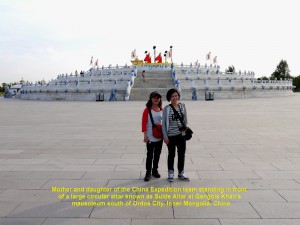
Sulde Altar, a large 3-levelled, circular structure, where Mongolians worship Genghis Khan, sky, heaven, etc. at the Genghis Khan’s Mausoleum, Inner Mongolia
There is a large, three-levelled circular structure of 54 metres in diameter known as Sulde Altar which is a short distance from this grand building. Sulde Altar is a consecrated place for Mongolians to worship Genghis Khan and heaven.
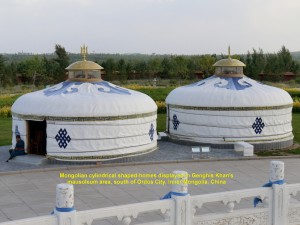
Two white yurts near Sulde Altar at Genghis Khan;s Mausoleum are shown as Mongolian houses, at the Mausoleum
Near this worshipping place are two white yurts(Mongolian houses) that are set up as an exhibit for tourists to see. Further away from the mausoleum is a sacred place on a high ground. A row of small cone-shaped structures of stones leads to the largest one. Mongolians come here on the 21st. of March of their lunar calendar every year to worship Genghis Khan, his horse, mountains, rivers, spirits, stars and heavens.
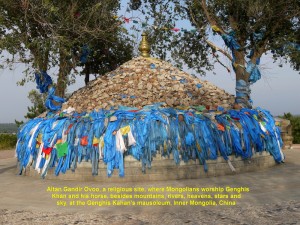
Altan Gandir Ovoo, a religious site where Mongolians worship Genghis Khan at the Mausoleum, Ejin Horo Town, Ordos City, Inner Mongolia
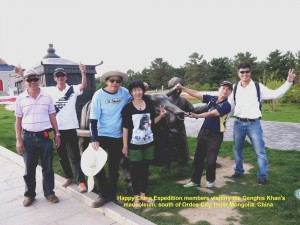
China Expedition members at the Genghis Khan’s Mausoleum, Ejin Horo Town, Ordos City, Inner Mongolia, China
Before we left the Mausoleum at 6 p.m., we had a group photograph at its entrance for remembrance. Then we moved on again. This time we were going to Suba Erga Town which was several kms north-east of Ordos City.
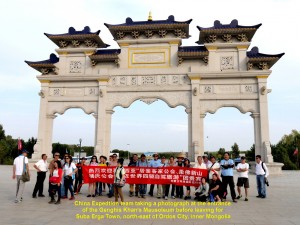
China Expedition team taking a photo at the entrance of Genghis Khan’s Mausoleum, Ejin Horo Town, Ordos City, Inner Mongolia
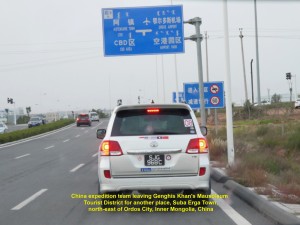
China Expedition team leaving Genghis Khan’s Mausoleum Tourist District for Suba Erga Town, north-east of Ordos City, Inner Mongolia
Over an hour later, we reached the town and then went to a hotel on a prairie(grassland), Subohan Prairie, nearby. Known as the Aobaohui Hotel, it was a unique hotel consisting of over a hundred Mongolian-styled houses known as ‘yurts’. Each ‘yurt’ has a large circular bed for two or three guests, a modern bathroom and a television set.
On arrival at the hotel, we went to a large tent for dinner. Before the dinner began, a short welcoming ceremony was held. One of our members acting as our representative received a cup of wine and a silk-scarf from a senior hotel officer as a gesture of hospitality. Then we had a sumptuous dinner that included a delicious dish of roasted lamb. After dinner, we retired in the ‘yurts’.
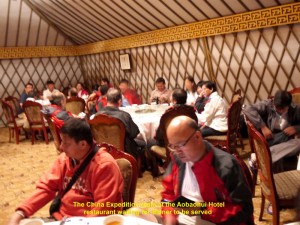
China Expedition team waiting for dinner at the Aobaohui Hotel, Subohan Prairie, Suba Erga Town, Ordos City, Inner Mongolia
Day 31(Saturday, 14.9.2013)
Ordos – Hohhot
(Distance: 316 km)
After breakfast, we gathered at the entrance of The Aobaohui Hotel waiting for a tractor-drawn carriage to bring us to a grassland behind the hotel. At 9.30 a.m. it came and brought us to a spot on the grassland for a horse-ride.
As we were going to the place, we saw sheep grazing in the distance and cows crossing our path. After a 20-minute bumpy ride on a dirt road, we reached the spot on the vast Subohan Grassland where we saw a few ‘yurts’ and several horses with their masters.

Some Expedition members on Subohan Grassland getting ready for a horse-ride, Ordos, Inner Mongolia, China
Then some of us took a horse-ride which cost us RMB 200 each. As it was going to be my first experience of riding a horse, I felt a little bit worried that I might be thrown off a horse’s back. But when I watched my friends riding their horses, comfortably, my fear disappeared. The ride was a short one but I did enjoy it. That was my unforgettable experience.
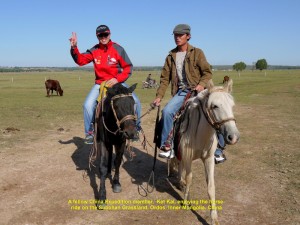
A fellow-member, Ket Kai, enjoying the horse-ride on Subohan Grassland, Ordos, Inner Mongolia, China
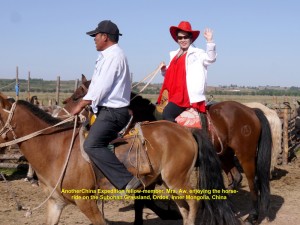
Another fellow-member, Mrs. Aw, enjoying a horse-ride on Subohan Grassland, Ordos, Inner Mongolia, China
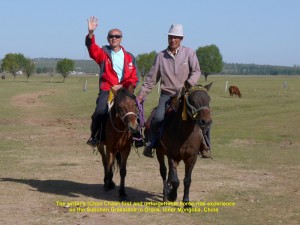
The writer, Choo Chaw, enjoying his first, unforgettable horse-ride on Subohan Grassland, Ordos, Inner Mongolia, China
Later, we all left the hotel at 10.30 a.m. and travelled over 300 km to a city in the east, Hohhot, which is the capital of Inner Mongolia. The sky was clear, but the weather was hot in this semi-desert area of Inner Mongolia.
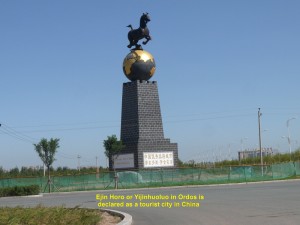
Tall structure with a statue of a horse on a globe at a roundabout in Ordos declaring Ordos as a tourist city in China
While travelling on a good expressway, G6 Jingzang Expressway, to Hohhot, we saw some coal-fired power plants and solar-energy power plants too. Inner Mongolia is one of the top three major consumers of coal. The emission of acidic gases and soot from the coal-fired plants has caused a serious impact on the environments and people’s health. The solar and wind energies are renewable sources and do not cause pollution. China is continuing developing these sources and hoping that carbon emission will soon be reduced, greatly.
At 1.30 p.m. we stopped in Shulin City to have lunch at a restaurant. Then at 2.30 p.m. our journey resumed. On the way, we crossed a Yellow River plain and 5657 metre-long bridge over the Yellow River. On the fertile plain, crops, like barley, corns and wheat, were grown.
Finally, at 5.00 p.m. we entered Hohhot City, the capital of Inner Mongolia, and checked in at Hailiang Plaza Hotel. After leaving our luggage in our rooms, we visited a few streets of the old part of the city.
At 6.30 p.m. we felt hungry and entered a small restaurant. We ordered a few dishes and sat down to eat. Later, the lady-owner of the restaurant brought a few more dishes for us. Then she told us that the whole meal was on the house as she was happy to see Malaysians enjoying her food. We were, pleasantly, surprised and thanked her. In return, I took out a RM 10 Malaysian currency and gave it to her as a souvenir. After taking a few photos with her and her husband, we thanked and bade them farewell, and continued our sightseeing of the old part of the city.
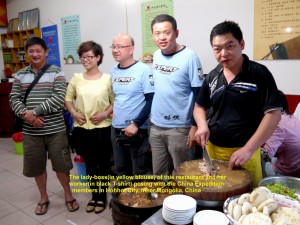
China Expedition members taking a photo with the lady-boss(in yellow blouse) and worker(in black T-shirt) in her restaurant, Hohhot City, Inner Mongolia, China
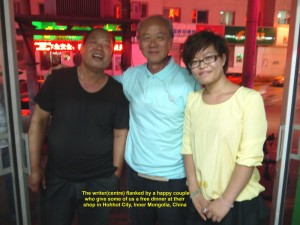
Writer(middle) taking a photo with the happy couple, the owners of a restaurant in Hohhot City, Inner Mongolia, China
Journal of My 2013 China Expedition:
Written by Choo Chaw, Kluang, Johor, Malaysia

